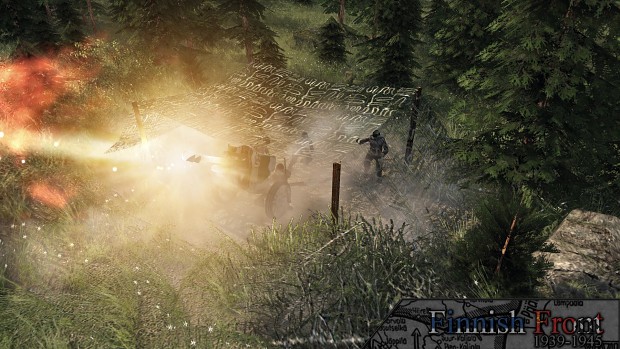This modification will add Finnish faction to Men of War Assault Squad 1 & 2 along with multiple campaigns for the Finnish side. The campaigns will be based on Winter war's last battles, Continuation war's "attack phase", advance along Kirov-railway in 1941 and 1942, defensive battles of 1944 and Lapland war. Each faction will be unique and player has to adapt his play-style to use advantages and disadvantages to defeat their enemies. German faction has most elite infantry formations, but they lack heavier tanks and heavy artillery. Russians are well armed, have heavy-armor support, have more infantry, but their infantry aren't as well trained and experienced as Finnish and German counterparts. Finnish faction will be "in-between" the Germans and USSR, having enough equipment for attacks & defending areas. Shortcomings of the Finnish faction is lack of mobility and the tank costs.
"Attention! - Fire!"
In the picture you can see a Finnish used 105 H/33 (10,5 cm leichte Feldhaubitze 18). It has been painted with the standard three tone pattern.
Finland had one of the most varying amount of different weaponry in the world.
The Finnish Army had many prewar American, British, French, Swedish and Russian artillery pieces, which were supplemented with captured Soviet and newly bought ones from multiple countries.
In addition Finland manufactured artillery pieces with Bofors license.
Finnish artillery had issues with the varying origin of the equipment and supplying different equipment was also an issue.
Most logistical issues had been fixed by 1944 when Soviet offensive began. By then, the development of forward observing tactics allowed rapid fire concentrations of multiple batteries on a single target.
For example, during battle of Ihantala one observer could direct fire of over 200 artillery pieces at once.







That just looks sexy